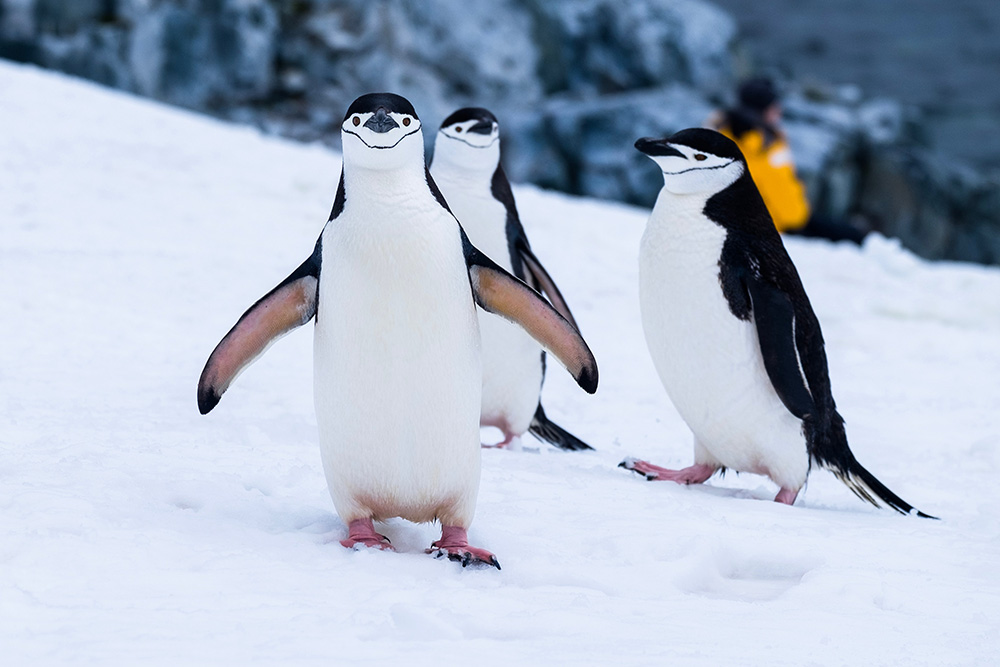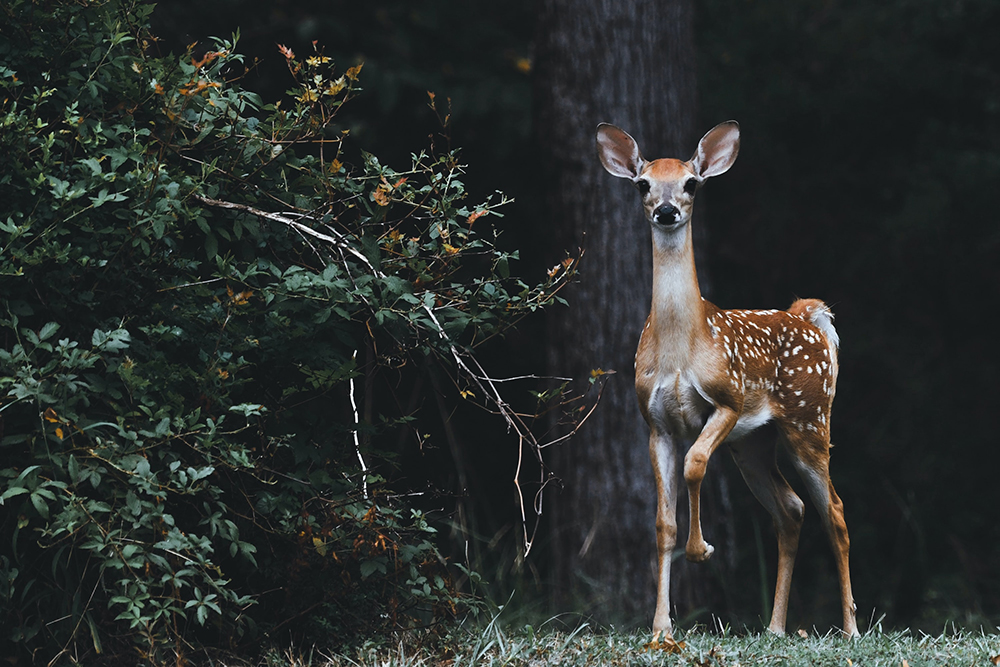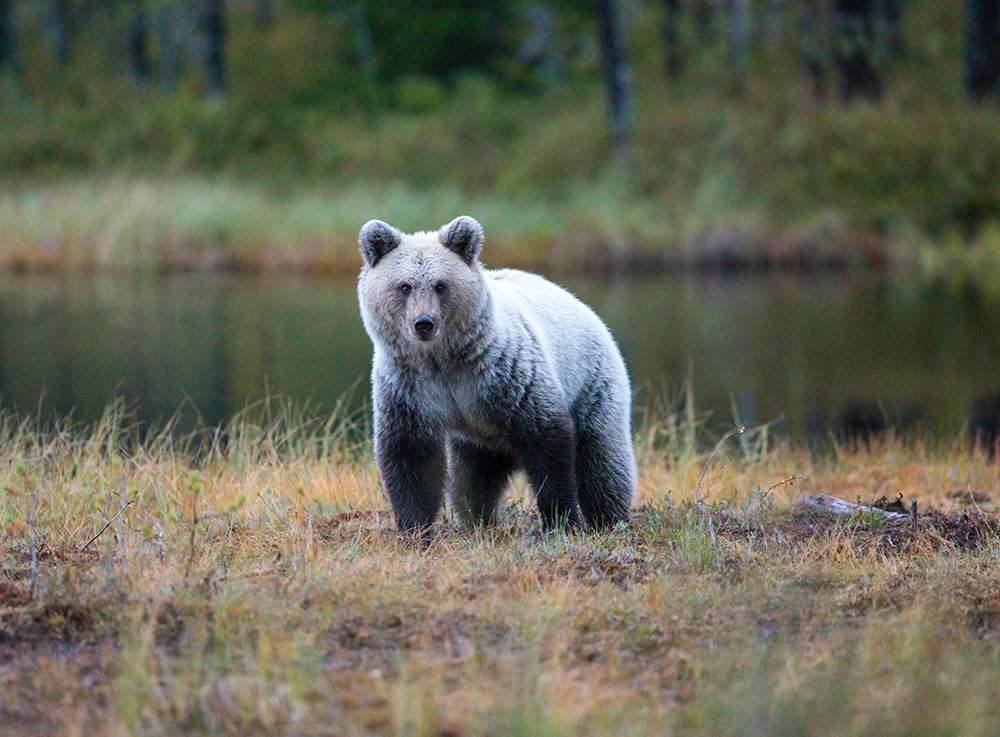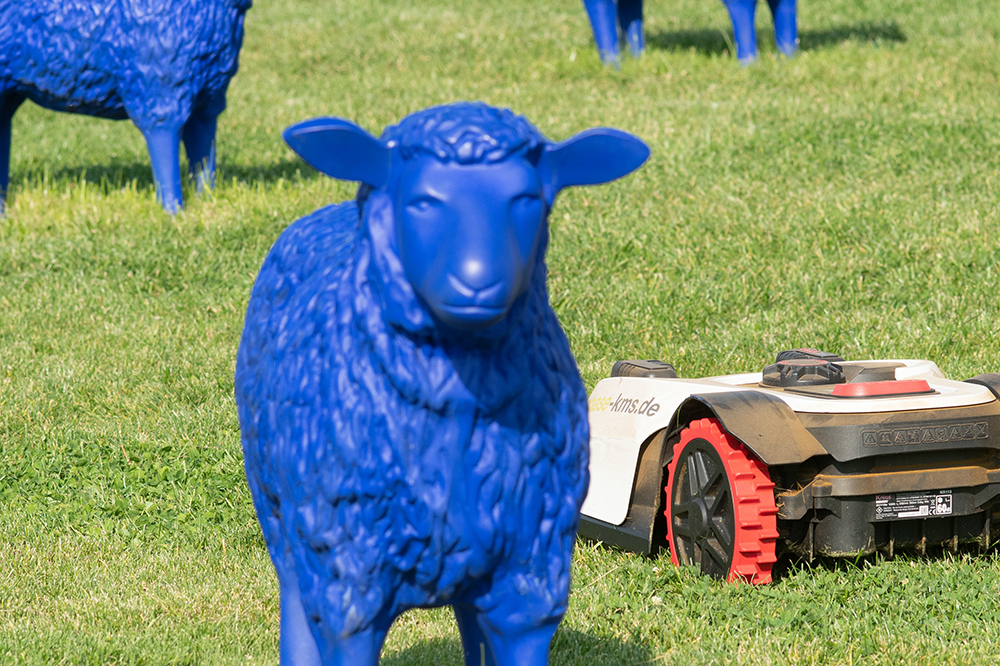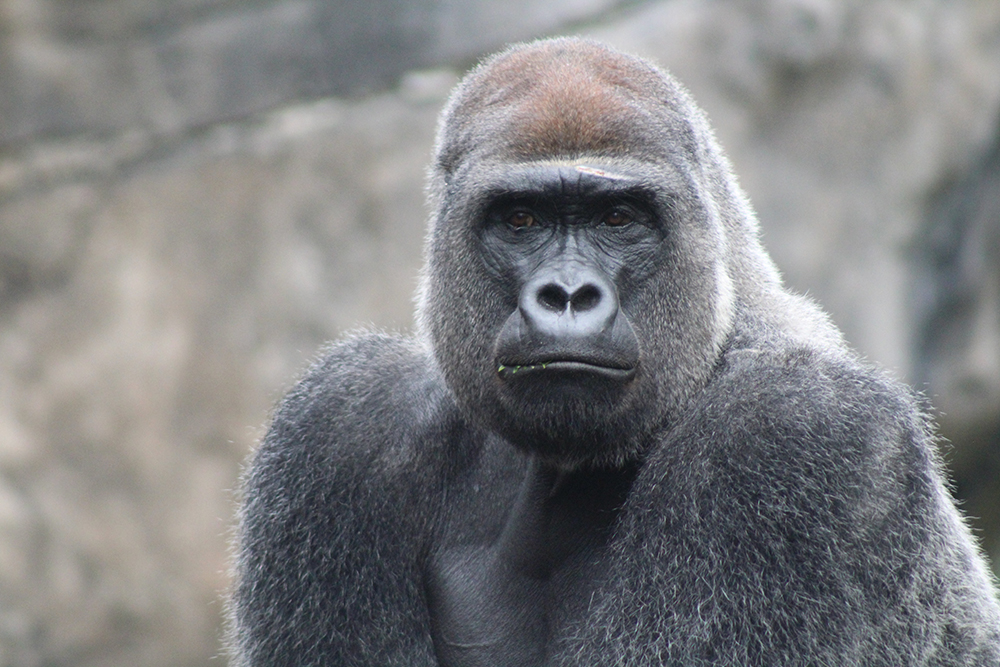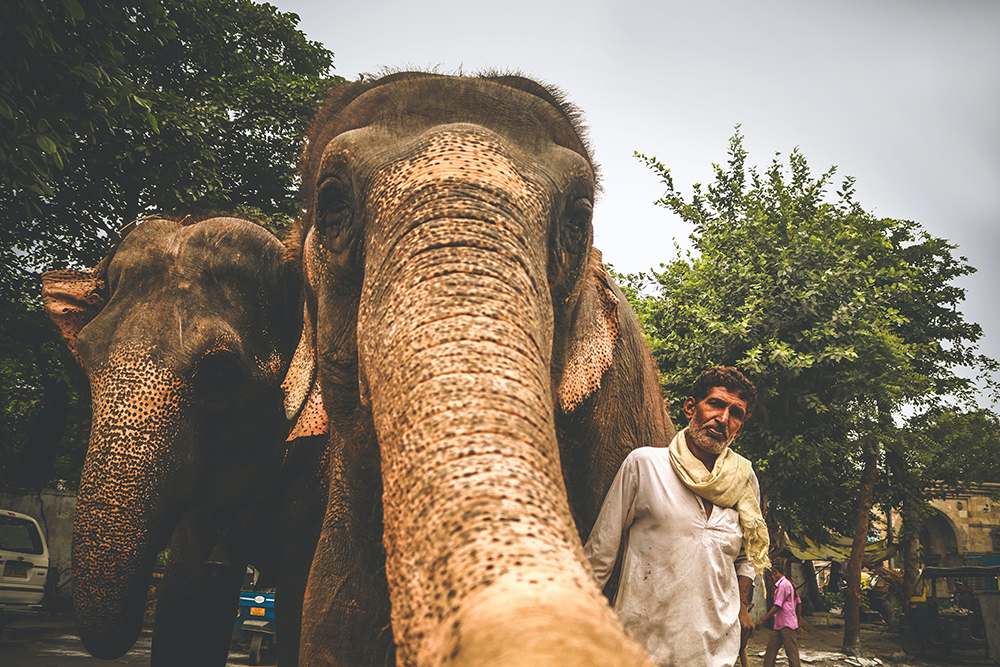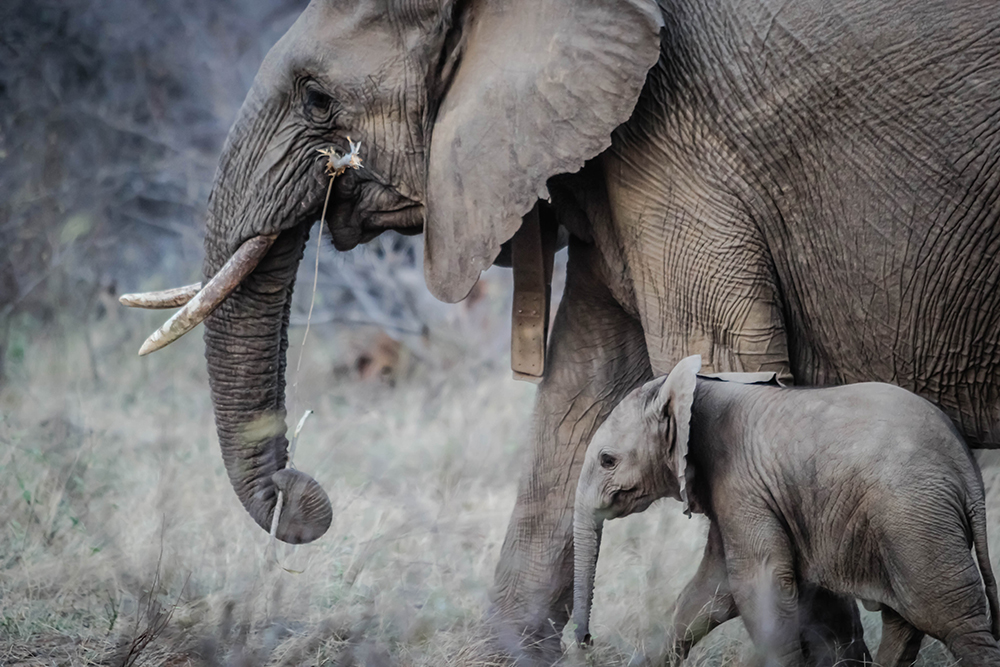ACI2022 continued on December 7 with Paper Sessions. Number 1 was “Designing for Human-Animal Relations”. Clara Mancini from The Open University gave a talk on the topic “Politicising Animal-Computer Interaction: an Approach to Political Engagement with Animal-Centred Design”. She is one of the pioneers in the discipline of animal-computer interaction. This was followed by Dirk van der Linden’s presentation “Animal-centered design needs dignity: a critical essay on ACI’s core concept”. The scientist from the Northumbria University referred to the Swiss law, which assumes the dignity of living beings – animals as well as plants, it should be added. Minori Tsuji from Future University Hakodate spoke about the “Investigation on Enhancement of the Sense of Life in Safari Park Online Tours with Animal Breathing Reproduction System”. Visitors can touch artifacts with different breathing frequencies. The final contribution in the morning came from Jennifer Cunha (Parrot Kindergarten) and Corinne Renguette (Indiana University-Purdue University). It was about “A Framework for Training Animals to Use Touchscreen Devices for Discrimination Tasks”. The scientists taught various animals, such as a parrot, a rat and a dog, how to use tablets. More information on the conference via www.aciconf.org.
Exploring other Sensibilities
ACI2022 – the leading conference on animal-computer interaction – kicked off on December 5, 2022 at Northumbria University in Newcastle upon Tyne. After the workshop “Animal Centered Research beyond ACI: Exploring the Applicability of Animal Centered Principles to All Animal Research” was held on the first day, the workshop “Exploring other sensibilities – beyond human senses and aesthetics” was held on the second day. “This workshop aims to facilitate human participants to become more aware of other animals’ sensory and aesthetic sensibilities, raising points for discussion and future research within ACI. For all animals, being able to make sense of the environment is crucial in order to gain control and make informed choices, as well as to achieve competence in daily activities. Although human perception is limited by evolution, technology can enable us to perceive signals that may be meaningful for other species, thereby gaining insight and possibly empathy. Moreover, pursuing a multi-species perspective may foster inclusive approaches to design that aim to achieve a lighter environmental impact by taking into account the sensory experiences of other species.” (Website ACI2022) The workshop used innovative methods to achieve the goal. “We will offer participants a range of activities to challenge human senses and sense-making abilities, and then invite them to collaboratively design and test a system that incorporates some animal-centred sensory stimulation inspired by the activities previously undertaken.” (Website ACI2022) The participants mastered the tasks with great commitment and great pleasure. The entire conference program is available at www.aciconf.org/conference-program.
A Robot Among Penguins
British Filmmaker John Downer has created artificial monkeys, wolves, hippos, turtles, alligators, etc., to observe appropriate wildlife and obtain spectacular images. His well-known robots are very intricately designed and resemble the animals they mimic in almost every detail. It is not necessary to resort to such technically elaborate and artistically demanding means for all species. USA Today reports in a recent article about a robot called ECHO. “ECHO is a remote-controlled ground robot that silently spies on the emperor penguin colony in Atka Bay. The robot is being monitored by the Single Penguin Observation and Tracking observatory. Both the SPOT observatory, which is also remote-operated through a satellite link, and the ECHO robot capture photographs and videos of animal population in the Arctic.” (USA Today, May 6, 2022) ECHO does not resemble a penguin in any way. It is a yellow vehicle with four thick wheels. But as a video shows, the animals seem to have gotten used to it. It comes very close to them without scaring them. Wildlife monitoring using robots is becoming increasingly important, and obviously very different types are being considered.
Machines and Robots for Animal Welfare
On 25 February 2022, the article “Passive, Active, and Proactive Systems and Machines for the Protection and Preservation of Animals and Animal Species” by Oliver Bendel was published in Frontiers in Animal Science. From the abstract: “Digitalization and automation are expanding into many areas, resulting in more widespread use of partially and fully autonomous machines and robots. At the same time, environmental and other crises and disasters are on the rise, the world population is growing, and animals are losing their habitat. Increasingly, machines and robots such as agricultural vehicles, autonomous cars, robotic lawnmowers, or social robots are encountering animals of all kinds. In the process, the latter are injured or killed. Some machines can be designed so that this does not happen. Relevant disciplines and research areas briefly introduced here are machine ethics, social robotics, animal-machine interaction, and animal-computer interaction. In addition, animal welfare is important. Passive and active machines—as they are called in this review—are already appearing and help to observe and protect animals. Proactive machines may play a role in the future. They could use the possibilities of full automation and autonomy to save animals from suffering in agriculture or in the wild. During crises and disasters and in extensive nature reserves, they could observe, care for, and protect animals. The review provides initial considerations on active, passive, and proactive machines and how they can be used in an animal preservation context while bearing in mind recent technical and global developments.” The article is part of the research topic “Animal-Computer Interaction and Beyond: The Benefits of Animal-Centered Research and Design” and can be accessed at www.frontiersin.org/articles/10.3389/fanim.2022.834634/full.
ANIFACE: Animal Face Recognition
Facial recognition is a problematic technology, especially when it is used to monitor people. However, it also has potential, for example with regard to the recognition of (individuals of) animals. Prof. Dr. Oliver Bendel had announced the topic “ANIFACE: Animal Face Recognition” at the University of Applied Sciences FHNW in 2021 and left the choice whether it should be about wolves or bears. Ali Yürekkirmaz accepted the assignment and, in his final thesis, designed a system that could be used to identify individual bears in the Alps – without electronic collars or implanted microchips – and initiate appropriate measures. The idea is that appropriate camera and communication systems are available in certain areas. Once a bear is identified, it is determined whether it is considered harmless or dangerous. Then, the relevant agencies or directly the people concerned will be informed. Walkers can be warned about the recordings – but it is also technically possible to protect their privacy. In an expert discussion with a representative of KORA, the student was able to gain important insights into wildlife monitoring and specifically bear monitoring, and with a survey he was able to find out the attitude of parts of the population. Building on the work of Ali Yürekkirmaz, delivered in January 2022, an algorithm for bears could be developed and an ANIFACE system implemented and evaluated in the Alps. A video about the project is available here.
Wildlife Conservation at a Garden Level
Sophie Lund Rasmussen and her co-authors published the interesting and enlightening article “Wildlife Conservation at a Garden Level: The Effect of Robotic Lawn Mowers on European Hedgehogs (Erinaceus europaeus)” in April 2021. In their “Simple Summary” they write: “Injured European hedgehogs are frequently admitted to hedgehog rehabilitation centres with different types of cuts and injuries. Although not rigorously quantified, a growing concern is that an increasing number of cases may have been caused by robotic lawn mowers. Research indicates that European hedgehogs are in decline. It is therefore important to identify and investigate the factors responsible for this decline to improve the conservation initiatives directed at this species. Because hedgehogs are increasingly associated with human habitation, it seems likely that numerous individuals will encounter several robotic lawn mowers during their lifetimes. Consequently, this study aimed to describe and quantify the effects of robotic lawn mowers on hedgehogs, and we tested 18 robotic lawn mowers in collision with dead hedgehogs. Some models caused extensive damage to the dead hedgehogs, but there were noteworthy differences in the degree of harm inflicted, with some consistently causing no damage. None of the robotic lawn mowers tested was able to detect the presence of dead, dependent juvenile hedgehogs, and no models could detect the hedgehog cadavers without physical interaction. We therefore encourage future collaboration with the manufacturers of robotic lawn mowers to improve the safety for hedgehogs and other garden wildlife species.” (Rasmussen et al. 2021) In 2019/2020, Oliver Bendel and his team developed the prototype HAPPY HEDGHEHOG. This robot lawnmower stops working as soon as it detects hedgehogs. A thermal recognition sensor and a camera with image recognition are used. The paper was presented at the AAAI Spring Symposia in March 2021.
Towards Animal Face Recognition
Face recognition for humans is very controversial, especially when it comes to surveillance or physiognomy. However, there are also other possible applications, for example in relation to animals. At the moment, individuals are mainly tracked with the help of chips and transmitters. However, these are disturbing for some of the animals. Further, the question is whether one should interfere with living beings in this way. In addition, animals are constantly being born that escape monitoring. The project “ANIFACE: Animal Face Recognition” will develop a concept of a facial recognition system that can identify individuals of bears and wolves. These are advancing more and more in Switzerland and need to be monitored to protect them and affected people (and their agriculture). Facial recognition can be used to identify the individual animals and also to track them if there are enough stations, which of course must be connected with each other. An interesting sidebar would be emotion recognition for animals. The system could find out how bears and wolves are feeling and then trigger certain actions. The project was applied for in July 2021 by Prof. Dr. Oliver Bendel, who has already designed and implemented several animal-friendly machines with his teams. In August, it will be decided whether he can start the work.
Talking with Animals
We use our natural language, facial expressions and gestures when communicating with our fellow humans. Some of our social robots also have these abilities, and so we can converse with them in the usual way. Many highly evolved animals have a language in which there are sounds and signals that have specific meanings. Some of them – like chimpanzees or gorillas – have mimic and gestural abilities comparable to ours. Britt Selvitelle and Aza Raskin, founders of the Earth Species Project, want to use machine learning to enable communication between humans and animals. Languages, they believe, can be represented not only as geometric structures, but also translated by matching their structures to each other. They say they have started working on whale and dolphin communication. Over time, the focus will broaden to include primates, corvids, and others. It would be important for the two scientists to study not only natural language but also facial expressions, gestures and other movements associated with meaning (they are well aware of this challenge). In addition, there are aspects of animal communication that are inaudible and invisible to humans that would need to be considered. Britt Selvitelle and Aza Raskin believe that translation would open up the world of animals – but it could be the other way around that they would first have to open up the world of animals in order to decode their language. However, should there be breakthroughs in this area, it would be an opportunity for animal welfare. For example, social robots, autonomous cars, wind turbines, and other machines could use animal languages alongside mechanical signals and human commands to instruct, warn and scare away dogs, elks, pigs, and birds. Machine ethics has been developing animal-friendly machines for years. Among other things, the scientists use sensors together with decision trees. Depending on the situation, braking and evasive maneuvers are initiated. Maybe one day the autonomous car will be able to avoid an accident by calling out in deer dialect: Hello deer, go back to the forest!
Animal-Computer Interaction
Clara Mancini (The Open University) and Eleonora Nannoni (University of Bologna) are calling for abstracts and papers for the Frontiers research topic “Animal-Computer Interaction and Beyond: The Benefits of Animal-Centered Research and Design”. They are well-known representatives of a discipline closely related to animal-machine interaction. “The field of Animal-Computer Interaction (ACI) investigates how interactive technologies affect the individual animals involved; what technologies could be developed, and how they should be designed in order to improve animals’ welfare, support their activities and foster positive interspecies relationships; and how research methods could enable animal stakeholders to participate in the development of relevant technologies.” (Website Frontiers) The editors welcome submissions that contribute, but are not necessarily limited, to the following themes: 1) “Applications of animal-centered and/or interactive technologies within farming, animal research, conservation, welfare or other domains”, and 2) “Animal-centered research, design methods and frameworks that have been applied or have applicability within farming, animal research, conservation, welfare or other domains Submission information is available through the website” (Website Frontiers). More submission information is available through the Frontiers website.
AI for Elephant Protection
According to Afrik21, Olga Isupova (University of Bath) has just developed an AI system that allows to photograph and analyse large areas. Coupled with a satellite, it is designed to monitor African elephants, which are being decimated by poachers at the rate of one every 15 minutes. “The system collects nearly 5,000 square kilometres (km2) of photos highlighting elephants. The large size of African elephants makes them easier to spot. The results provided by the tool are then compared with those provided by human counting.” (Afrik21, 28 April 2021) Olga Isupova lists a number of advantages: “The programme counts the number of elephants by itself, which no longer puts the people who used to do this task in danger. The animals are no longer disturbed and the data collection process is more efficient …” (Afrik21, 28 April 2021) According to Afrik21, the AI expert intends to further develop her invention and eventually extend it to monitoring footprints, animal colonies or counting smaller species. The article can be accessed via www.afrik21.africa/en/africa-artificial-intelligence-to-combat-elephant-poaching/.


